Artificial Intelligence in Public Health
In less than 24 Hours*
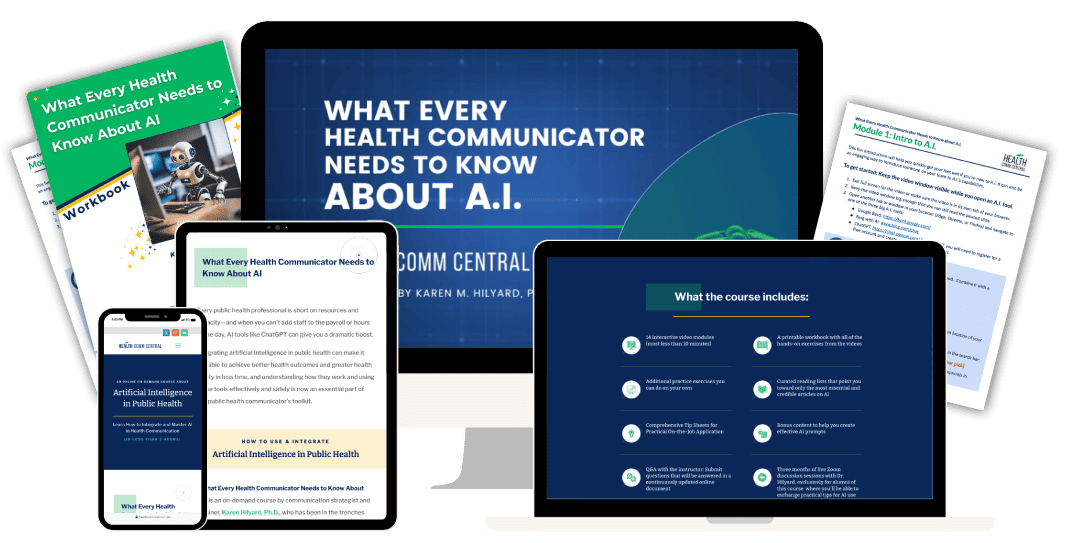
*Based upon the participant’s dedication, involvement, and personal learning speed, acknowledging that the format might demand concentrated effort to ensure a thorough understanding.

What Every Health Communicator Needs to Know About AI
Public health professionals often face limitations in resources and capacity. When it’s not feasible to increase staff or extend working hours, incorporating AI tools like ChatGPT can provide a significant advantage.
The inclusion of artifical intelligence in public health efforts can lead to improved health outcomes and increased health equity in a shorter timeframe. It’s crucial for public health communicators to grasp the functionality of these tools and utilize them effectively and safely, making it an essential component of their toolkit.
How to Use & integrate
Artificial Intelligence in Public Health
Our new online course, What Every Health Communicator Needs to Know About AI, is a comprehensive program led by communication strategist and trainer, Karen Hilyard, Ph.D. With almost two decades of experience collaborating with prominent agencies such as CDC, NIH, and various national, state, and local organizations, Dr. Hilyard brings a wealth of expertise to this course.
The course comprises 14 succinct modules, designed for convenient consumption during a coffee or tea break. Throughout these modules, participants will engage in practical exercises to enhance their skills, along with receiving one-page job aids for daily use. In a concise duration of less than two hours, participants will gain proficiency in utilizing artificial intelligence for public health purposes, covering aspects from program design to image generation. This newfound knowledge is geared towards streamlining the role of health communicators, making their tasks more manageable.
Furthermore, the course offers essential insights into the safety and ethics associated with AI use in public health communication. To facilitate interactive learning, participants will have the opportunity to attend live Zoom sessions with Dr. Hilyard, providing a platform for addressing any queries or concerns. These live sessions are included as part of the course package, enhancing the overall learning experience.

Artificial Intelligence in Public Health
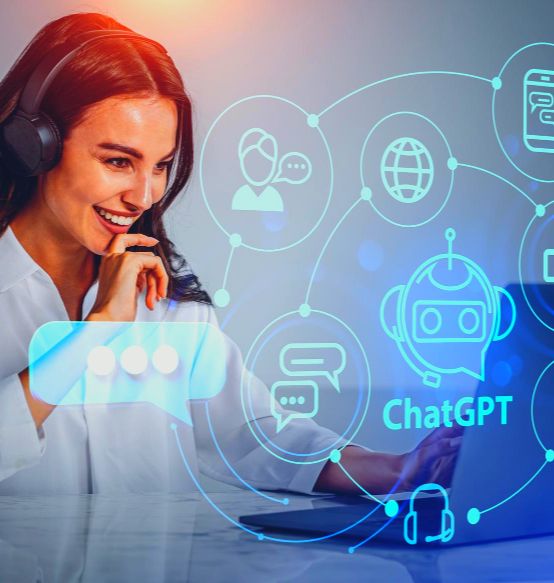
- For those who are new to utilizing AI tools, or even if you’re already familiar with AI, this program provides a practical introduction for effective use, without the need for technical expertise.
- For those already employing AI, you will receive the necessary words and exercises to educate your staff, grantees, partners, or clients on the optimal utilization of these tools.
- For organizations that are currently navigating the establishment of guidelines for the ethical, safe, and suitable use of AI, this initiative equips you with practical skills and knowledge, enabling you to confidently engage in discussions regarding its advantages and disadvantages.

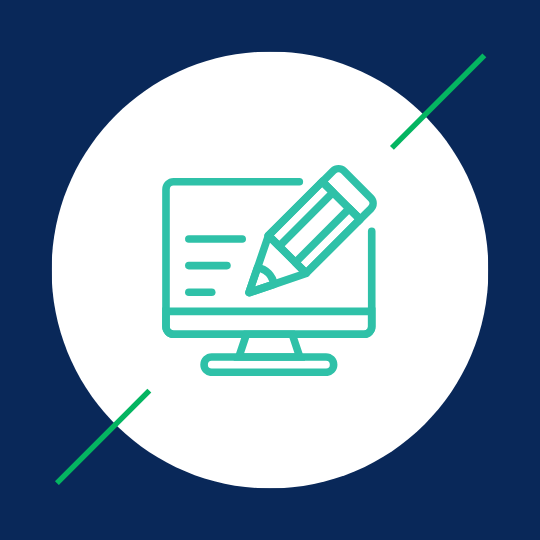
Access to additional practice exercises for individual study
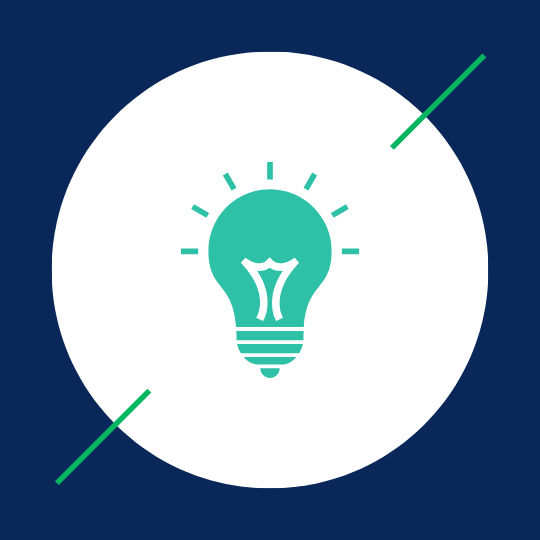
Detailed tip sheets designed for practical application
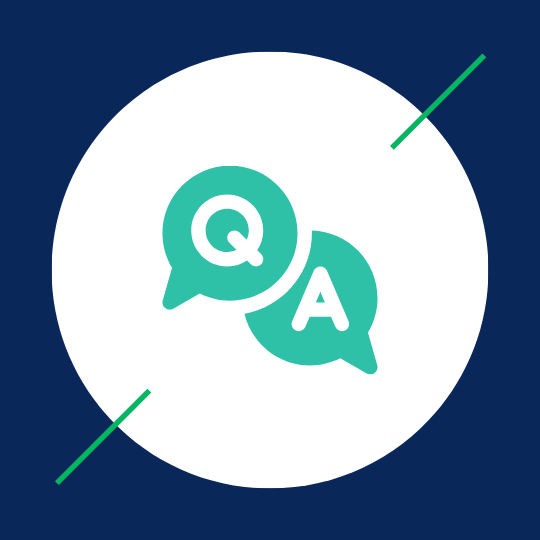
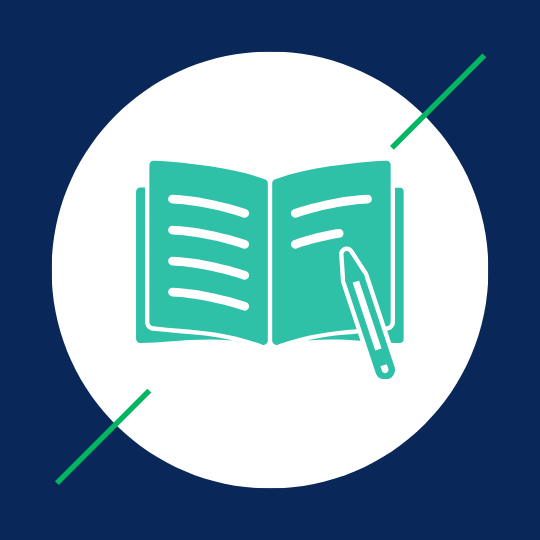



Course Curriculum
Course Introduction
Module 10: Summarizing PDFs
Module 11: Developing Interactive Chatbots
Module 12: Using Plug-Ins for More Capabilities
Module 13: Concerns and Caveats for AI Use
Congrats! *Additional Resources*
Karen Hilyard, Ph.D., an expert in behavioral science and communication strategy, dedicates her efforts to shaping campaigns, messages, and materials aimed at impacting health behavior, policy, and systems.
For almost 2 decades, Dr. Hilyard has actively immersed herself in providing practical, evidence-based training to the public health workforce. Notably, she has been instrumental in delivering a multitude of courses for CDC University, each meticulously designed to be immediately applicable and relevant. Her courses excel at distilling intricate concepts into tangible skills, allowing participants to promptly translate theory into practice.
In addition to her pivotal roles in communication and training, Dr. Hilyard has left her mark on research, contributing to publications in esteemed journals including Health Affairs, Health Communication, Vaccine, and the American Journal of Preventive Medicine. Furthermore, she wears the hat of the host for the Health Comm Central podcast.

Artificial Intelligence in Public Health

Improved Health Outcomes and Equity
One of the most significant advantages of integrating artificial intelligence tools in public health communication is the potential for improved health outcomes and greater health equity. Artificial intelligence can create messages or analyze vast datasets quickly, identify trends, and provide insights that might be challenging for humans to discern in the same timeframe. This data-driven approach allows public health professionals to make informed decisions, allocate resources more effectively, and tailor interventions to specific populations, ultimately leading to better health outcomes and addressing health disparities.
Enhanced Efficiency
In the fast-paced world of public health, time is of the essence. AI tools can process and analyze data at speeds that surpass human capabilities. This increased efficiency enables health communicators to respond swiftly to emerging public health crises, conduct real-time surveillance, and adapt communication strategies on the fly. Consequently, Artificial intelligence not only saves valuable time but also contributes to a more proactive and responsive approach to health communication.


Targeted Communication
Using artificial intelligence in public health can allow health communication specialists to tailor their messages to different segments of the population. By analyzing data on individual preferences, health behaviors, and demographics, AI can help craft messages that resonate with specific groups, making the communication more effective. For instance, AI can assist in creating messages that are culturally sensitive, age-appropriate, or language-specific, thus increasing the likelihood of the message’s impact.
Public health professionals often operate under tight budgets and limited resources. Using artificial intelligence in public health can help optimize these resources by automating repetitive tasks, such as data collection and analysis. This automation frees up human resources for more complex and strategic tasks, reducing the burden on health communicators and allowing them to focus on critical decision-making and creative aspects of their work.

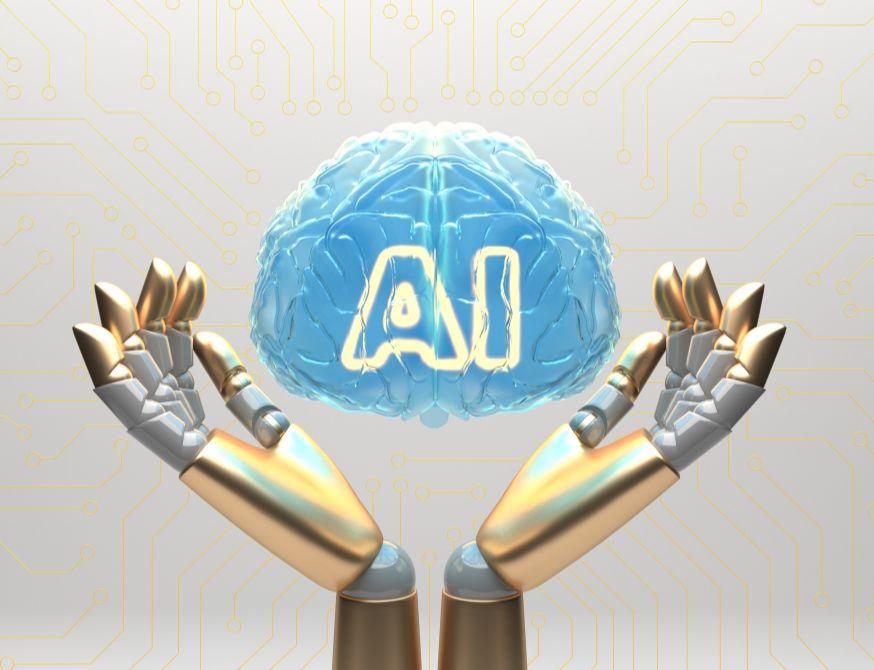
Continuous Learning and Adaptation
AI tools are designed to continuously learn and adapt based on user interactions and data feedback. This means that as health communicators use artificial intelligence in public health, the tools become more proficient at assisting them. Over time, Artificial intelligence can refine its recommendations, content generation, and message delivery, making it an increasingly valuable resource for public health communication professionals.
The integration of artificial intelligence in public health communication offers numerous benefits and unparalleled convenience. From improved health outcomes to enhanced efficiency and accessibility, AI has the potential to revolutionize the way health communicators operate. The “What Every Health Communicator Needs to Know About AI” course provides a structured and accessible opportunity for public health professionals to harness the power of AI, ultimately contributing to more effective and equitable public health communication. By equipping themselves with AI knowledge and skills, health communicators can navigate the ever-evolving landscape of public health with confidence and innovation.